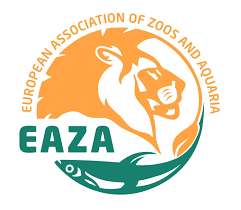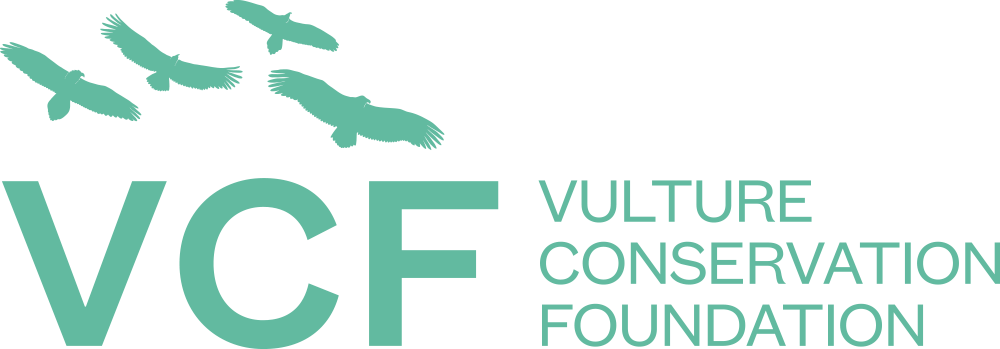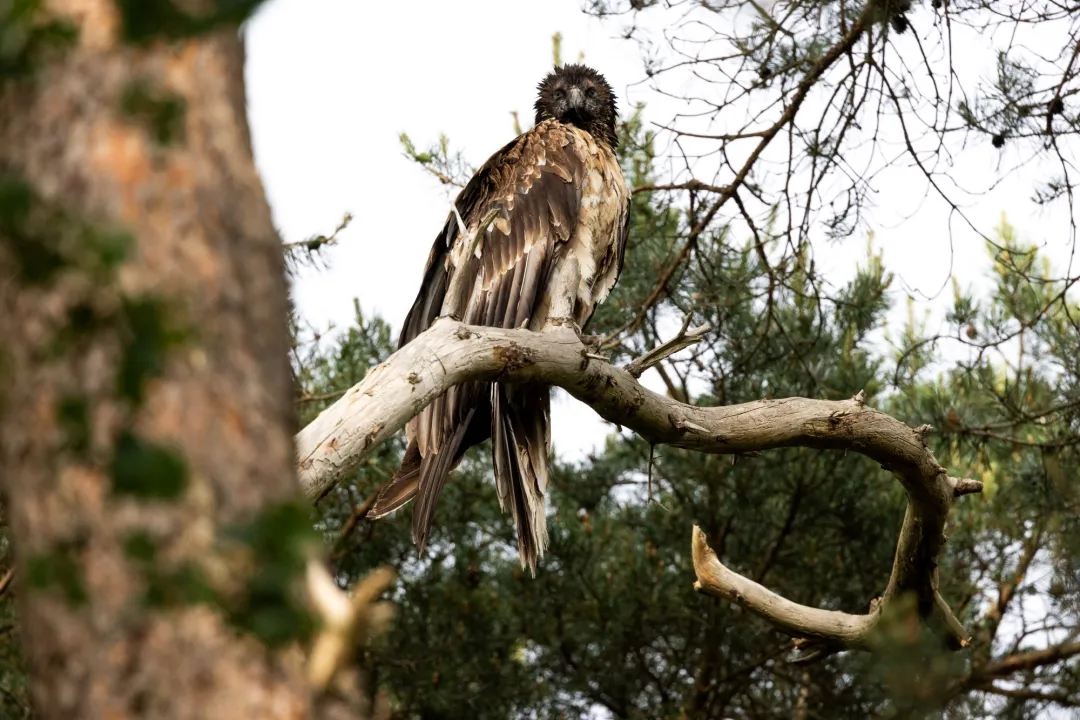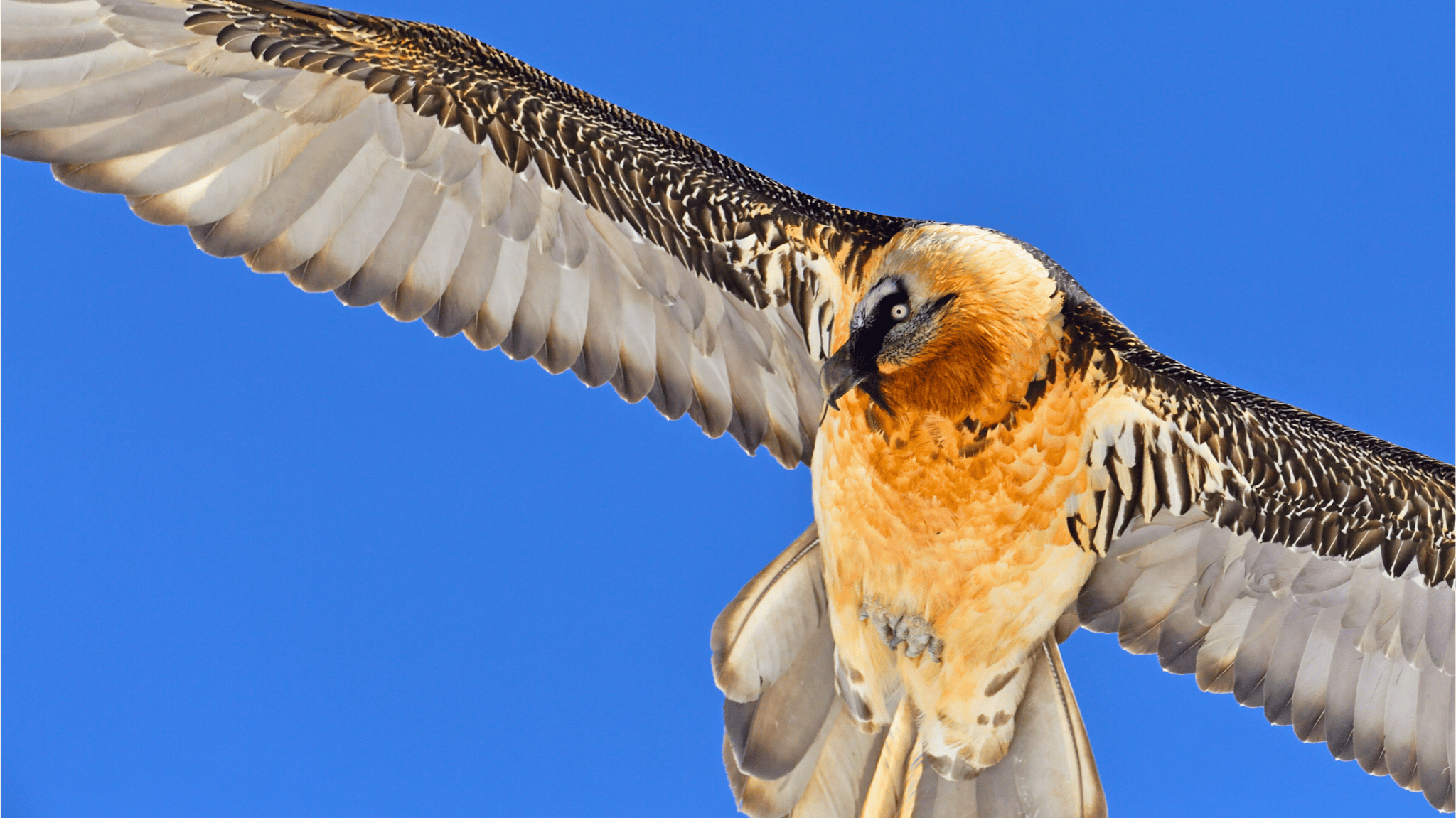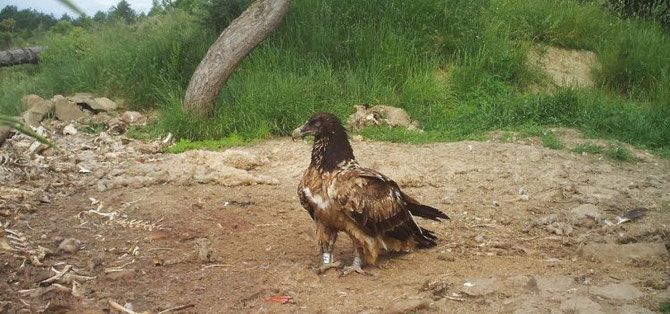
The LIFE GypConnect project reintroduces young Bearded Vultures into the Massif Central and the Pre-Alps to promote dispersal movements between the Alpine and the Pyrenean population. The project equips these birds with GPS tags to follow their trajectories during their first years, to better monitor their movements and the territories they frequently visit. Recently, a young released Bearded Vultures released in the Grands Causses travelled to the French Pyrenees, which is great news for the goals of the LIFE GypConnect project!
Release of Bearded Vulture Cévennes
Cévennes is a captive-bred bird that was donated to the project by the Bearded Vulture Captive Breeding Network (EEP), coordinate by the Vulture Conservation Foundation (VCF). The young male hatched in the Bearded Vulture captive breeding centre of Guadalentin in 2019. That same year, it was released in Lozere in the Grands Causses as part of the project’s reintroduction efforts.
Wanderings of Cévennes
In the spring of 2020, after visiting the area around its reintroduction site, Cévennes has travelled to the Massif Central above Clermont-Ferrand, before heading towards the Aquitaine region and reaching Bordeaux. After this, the Bearded Vulture then resumed its flight towards the Haut-Languedoc, passing through the Montagne Noire to reach the Aude in the French Pyrenees. The presence of the Cévennes in the Aude is a great example of one of the main objectives of this project: to reconnect the populations of the different mountain massifs.
After its long journey, Cévennes had plenty of food to enjoy in the Aude. For several years now, actions have been put in place to improve the food availability for scavenging birds. A series of supplementary feeding stations have been established in partnership with several livestock breeders. Carcasses are provided in these stations, and consumed naturally by the vultures: it is a reciprocal service — livestock breeders provide the food and vultures clean it for free! Cévennes found plenty of bones to feed on during its stop in the Aude, and he was not the only one enjoying this service. In fact, this station also regularly hosts Griffon, Cinereous and Egyptian Vultures. It is also monitored with photo trapping, which allowed the LIFE GypConnect team to see that Cévennes was in great shape.
We are looking forward to see the next adventures of this wandering Bearded Vulture! We hope it has a long future in the wild.
Bearded Vultures releases 2020
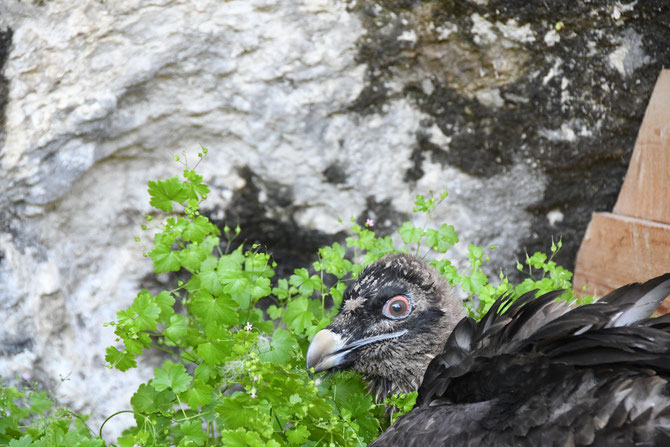
The LIFE GypConnect project has released a total of eight Bearded Vultures this year to the wild. The vultures hatched in captivity within the Bearded Vulture EEP, and were released in three different regions — four in the Grands Causses, two in Baronnies and two in Vercors.
LIFE GypConnect
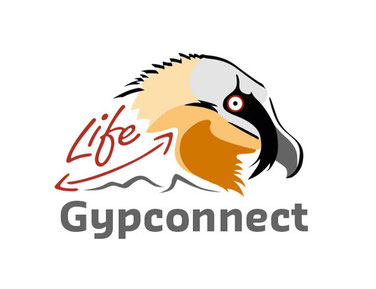
Led by the League pour la Protection des Oiseaux (LPO), the LIFE GYPCONNECT project aims to establish a breeding population of Bearded Vultures in the Massif Central and Department of the Drôme. Releasing captive-bred Bearded Vultures into the wild at sites such as the Parc Naturel Régional des Grands Causses, Parc Naturel Régional des Baronnies Provençales and Parc Naturel Régional du Vercors will create a core population that will connect the two populations of the species in the Alps and Pyrenees. To facilitate movements between the new population and the Alpine and Pyrenean populations the LIFE GYPCONNECT team is creating a network of supplementary feeding stations, and tackling threats such as poisoning, and collision and electrocution with the electricity infrastructure.

